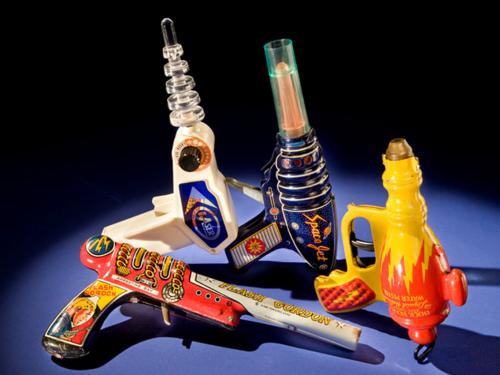
An Elegant Projector for a Civilized Age
Dec 18, 2015
Today, Star Wars: Episode VII – The Force Awakens will officially open in our two IMAX theaters (and around the world). Our Airbus IMAX Theater at the Udvar-Hazy Center features one of the most advanced projection rooms in the world, with twin 4k laser projectors (always two, there are, for 3D presentations) and a 12-channel sound system. In a cinema not-so far, far away in downtown Washington, DC, our Lockheed Martin IMAX Theater will run Episode VII in IMAX’s original format: 70mm film. Star Wars will be the final 70mm feature shown at the Lockheed Martin IMAX Theater before it too is converted to the state-of-the-art 4k laser system in mid-January. The IMAX empire was founded a long time ago (in the late 1960s) as an ultra-high resolution alternative to standard film. Our Lockheed Martin IMAX Theater (and the Museum) opened on July 1 1976. It wasn’t the first IMAX Theater in the nation, but it was close. Nearly 40 years later, our theaters offer two distinct Star Wars-viewing opportunities: only 7 IMAX theaters in North America are showing the film using the cutting edge-laser technology found at the Udvar-Hazy Center, and only 15 in the world are screening Episode VII using 70mm film projectors.
Running a feature-length movie in 70mm film is no small task. For Episode VII, the film arrived in 40 individual reels which had to be spliced together by hand. The completed film, now roughly 9 miles long, was then loaded onto a huge platter that will feed it into the projector. The whole procedure can take up to 16 hours, a challenging task even for the most dedicated trooper. Parts of this labor-intensive process are beneficial, according to Zarth Bertsch, director of theaters at the Smithsonian, “Being a physical process, if there is a problem, you can sometimes find a creative way around it, such as using a local machine shop to create a custom replacement part for the projector or reel unit, which we have done in the past. For digital, you have a bit of the ‘black box’ phenomenon, i.e. if an encryption key doesn’t work, or a file is corrupted, there is little you can do on site but wait.” Beyond opportunities for creative repairs, Bertsch says film as a format offers a unique physical dimension, “The physical craft and the nature of film will definitely be missed. It is a real photochemical process that captures the actual light of a given moment or series of moments in time. I will miss it very much, as will many others.”
When IMAX films were film. Director of Smithsonian Theaters, Zarth Bertsch, prepares "Star Wars: Episode VII" 70mm film for the Lockheed Martin IMAX Theater at the Museum in Washington, DC. This was the last 70mm film assembled and projected at the theater. After nearly 40 years of projecting 70mm, the theater was converted to digital in 2016.
The economics of operating film projectors are challenging, as the cost of materials has increased and the availability of new films dwindled. Despite this fiscal force, the Smithsonian did not rush to replace our trusty projectors at the earliest opportunity. According to Bertsch, “We intentionally waited until the technology reached a level that could at least rival our current 70mm experience. For the first time since the advent of digital projectors, laser projection meets or exceeds a number of technical aspects of 70mm film; in particular, the quality and brightness of 3D, and the density of blacks (certainly great in any kind of space imagery). I truly believe we waited the optimal amount of time, and are moving into a spectacular, landmark technology.” Is laser technology the new hope of the theaters across the galaxy? Or will 70mm film strike back one last time before it becomes part of cinema history?
Related Topics
You may also like
We rely on the generous support of donors, sponsors, members, and other benefactors to share the history and impact of aviation and spaceflight, educate the public, and inspire future generations. With your help, we can continue to preserve and safeguard the world’s most comprehensive collection of artifacts representing the great achievements of flight and space exploration.

